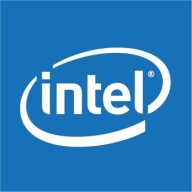

Intel MFSYS25 and Dell PowerEdge M are competing server systems in the enterprise market. Dell PowerEdge M appears to have the upper hand due to its advanced features and integration capabilities.
Features: Intel MFSYS25 offers flexible modularity, versatile design, and ease of workload accommodation. Dell PowerEdge M offers cutting-edge scalability, system integration, and advanced management tools.
Ease of Deployment and Customer Service: Dell PowerEdge M integrates seamlessly with existing infrastructures with detailed documentation and strong support channels. Intel MFSYS25 provides a straightforward setup but lacks the management sophistication found in Dell’s system.
Pricing and ROI: Intel MFSYS25 is cost-effective initially, providing good ROI through resource management. Dell PowerEdge M has higher upfront costs but promises long-term efficiency gains, offering compelling ROI for those investing in its advanced capabilities.

The Dell PowerEdge M-Series blade servers address the challenges of an evolving IT environment by delivering leading enterprise classfeatures and functionality. The M-Series delivers a unique array of options configured to meet the needs of your IT environment both now and in the future.
This Intel Modular Server System MFSYS25/MFSYS35 platform supports up to six compute modules, up to fourteen hot-swap 2.5-inch SAS hard disk drives in the Intel Modular Server System MFSYS25, or up to six hot-swap 3.5-inch SAS/SATA hard disk drives in the Intel Modular Server System MFSYS35, an integrated server management module, redundant Ethernet switches, and redundant storage controllers. The server ships configured for rack mounting, but may be mounted in a pedestal configuration.
We monitor all Blade Servers reviews to prevent fraudulent reviews and keep review quality high. We do not post reviews by company employees or direct competitors. We validate each review for authenticity via cross-reference with LinkedIn, and personal follow-up with the reviewer when necessary.